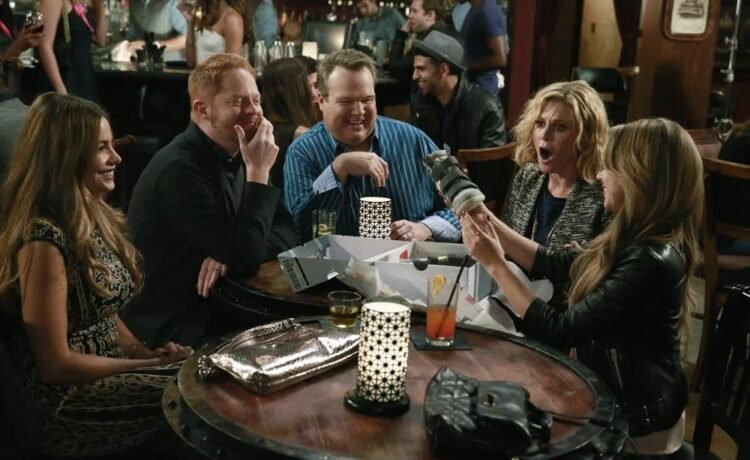In today’s age of endless content, streaming services, and supposedly “inclusive” storytelling, you’d think TV has something for everyone.
With diverse casts, cultural representation, and bold new narratives, it sure seems that way — at least on paper.
But if you’re part of the crowd that finds yourself rewatching Friends for the gazillionth time instead of diving into the latest TikTok-influenced teen drama, you’re not alone.


Yeah, I know what you’re thinking: “Is she gonna whine?”
Well, isn’t that the trend these days? 😉
The truth is, despite having 500 channels and thousands of series to choose from, it feels like there’s less worth watching.
The endless choice paradoxically leaves us longing for the kind of shows that drew in everyone, from Gen Z to Boomers, with shared laughs and common ground.


The “Nostalgia Rewind”
When you have to go back to shows from 20 or 30 years ago just to feel entertained, you start to realize that despite all the progress, modern TV might not be as inclusive as it thinks.
Sure, there are diverse faces on screen and socially conscious conversations in the dialogue, but that doesn’t necessarily translate to inclusive storytelling.
In trying so hard to keep up with trends, shows often cater to niche audiences at the expense of universal appeal.
The result? Older viewers and those outside the social media generation often feel like they’re on the outside looking in.


Classic shows like Cheers, The Golden Girls, and The Wonder Years managed to draw in viewers of all ages by blending humor with human experiences.
These series weren’t built around social media slang or trendy dialogue, but they tapped into universal themes that made everyone feel included.
They didn’t have to push boundaries just for shock value because they offered stories that felt authentic.
Today, shows like Abbott Elementary still achieve this to some extent, mixing comedy with relatable experiences.
However, for every Abbott Elementary, there are countless other series hyper-focused on narrow cultural moments that alienate anyone not in the know.


Streaming’s Splintering Effect
The streaming era has brought a golden age of choice, but with that comes a sense of isolation.
The sheer volume of content has fragmented viewership, making it hard to find shows that unite people like Friends or The Office once did.
Even long-running dramas like Blue Bloods have found a way to resonate across generations by focusing on big themes like family and justice.


But shows like that are becoming extinct these days.
And with Blue Bloods having been recently axed, you might want to savor the last few episodes — because who needs a classic nuclear family drama in a world that’s so over it, right?
It’s funny, isn’t it? We’re told TV has “never been better,” yet we often search for comfort in old favorites.
And with many of those shows available on streaming platforms, the new generation is actually watching and enjoying them. Hmm. Interesting.
Maybe that says more about today’s television than anything else.
It’s not that modern shows shouldn’t address current issues or target niche markets, but they can do so while still capturing universal themes.


The best TV doesn’t just reflect a moment; it reflects something timeless.
There’s a reason people keep revisiting older shows — it’s not just about nostalgia; it’s about the shared experiences that transcend age, culture, and background.
And let’s be real, don’t a lot of these so-called “modern” shows try to bring back that old-school vibe?
If everything was supposedly so terrible back then, why bother recreating it? Because, let me tell you, you’re missing the mark.


The Real Challenge for Modern TV
The real challenge for TV isn’t just to be “inclusive” or “relevant” but to find a balance that connects different generations.
Instead of alienating viewers with hyper-focused content, why not weave today’s realities into stories that resonate with everyone?
After all, isn’t that the point of good storytelling — giving every viewer something to relate to, regardless of their age or social media savvy?


So, while today’s landscape offers more content than ever, it’s worth asking: Are we truly moving forward, or are we just replacing one type of exclusivity with another?
Inclusivity should mean making room for stories that everyone can enjoy, not just those who speak the language of the latest trend.
What about you?
Do you find yourself reaching further back into TV history, or do you get pleasure from more current programming? We’d love to hear from you!






